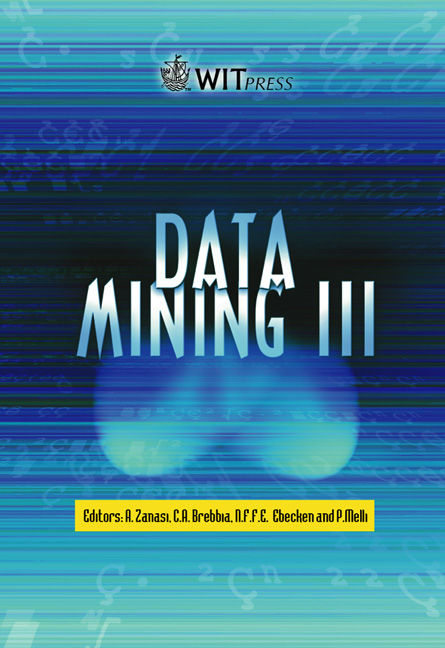SPADA: A Spatial Association Discovery System
Price
Free (open access)
Volume
28
Pages
Published
2002
Size
639 kb
Paper DOI
10.2495/DATA020171
Copyright
WIT Press
Author(s)
F A Lisi & D Malerba
Abstract
SPADA: A Spatial Association Discovery System* F. A. Lisi & D. Malerba Dipartimento di Infomnatica, Universita degli Studi di Bari, Italy. Abstract This paper presents a spatial association discovery system, named SPADA, which has been developed according to the theoretical framework of inductive databases. Our approach considers inductive databases as deductive databases with an integrated inductive component and relies on techniques borrowed from the field of Inductive Logic Programming (ILP). In SPADA, an ILP module supports the processing of spatial association mining queries and accesses spatial databases via a middle-layer module for feature extraction. The resulting architecture is illustrated by commenting spatial association mining sessions in detail and showing that ILP is a viable and promising solution to the development of inductive databases. 1 Introduction In recent times several extensions of data mining methods and techniques have been attempted to deal with advanced databases. Progress in spatial databases and in geographic information systems (GIS) has paved the way to one of the most active strands of research in knowledge discovery in databases (KDD), spatial knowledge discovery. It aims at the extraction of implicit knowledge, spatial relations, or other patterns not explicitly stored in spatial databases [12]. A spatial pattern is a pattern showing the interaction of two or more spatial objects or space-depending attributes according to a particular spacing or set of arrangements. E.g., cities across nations are often clustered near lakes, oceans and streams. Actually such an arrangement reveals a spatial association, meaning that one spatial pattern *This work has been supported by the MIUR COFIN-2001 project on \“Methods of knowledge discovery, validation and representation of the statistical information in decision tasks”.
Keywords





